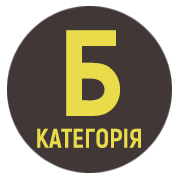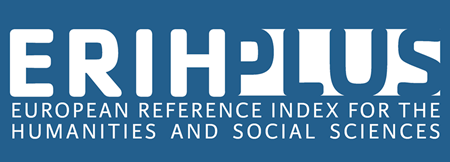THE TONES OF ‘THE TALES OF THE BARD OF BEADLE’ AS A MANIFESTATION OF TRANSLATION PECULIARITIES
DOI:
https://doi.org/10.32782/folium/2024.5.14Keywords:
sentiment analysis, LIWC, positive tonе, negative tonе, source text, target textAbstract
The proposed article is devoted to the analysis of the peculiarities of the translation of ‘The Tales of the Bard of Beadle’ into Ukrainian. In particular, the attention is focused on the sentiment analysis of individual stories from J.K. Rowling's collection ‘The Tales of the Bard of Beadle’: ‘The Wizard and the Hopping Pot’, “The Fountain of Fair Fortune” and “The Warlock’s Hairy Heart” in the original and their Ukrainian translation by V. Morozov, edited by O. Negrebetsky and I. Malkovych. The distinctive features of the translation of the mentioned stories in accordance with the tone indicators are determined. Attention is focused on tone dependence on the translation's relevance, the choice of vocabulary and the use of transformations, and the genre of the material under study. A set of theoretical issues related to the emergence and development of this field, the interpretation of the concept of text tone are summarised, and the tasks set for the analysis of opinions and the methods of their achievement are outlined. The article defines the concept of ‘sentiment analysis’ as a set of computer linguistics methods aimed at detecting the presence of emotional moods in texts (emotionally coloured vocabulary). The general characteristics and capabilities of the LIWC-22 software are described, as well as the improvements of the latest version compared to the previous ones. Using this application, three short stories were analysed together with the attached comments ‘Albus Dumbledore on…’ in their original and Ukrainian translations. The quantitative indicators of the categories of positively and negatively coloured vocabulary, as well as swearing that do not differ significantly between the original and the translation, are identified and analysed. The article provides graphs to outline the results clearly and includes average indicators of positive and negative tones in the stories for comparison with the results obtained. Prospects for the study of texts using sentiment analysis and the functions of the LIWC-22 software are substantiated.
References
Дарчук Н. П. Лінгвістичні засади автоматичного сентимент-аналізу українськомовного тексту. Science and Education a New Dimension Philology. Budapest, 2019. № 55. С. 10–13.
Немеш О., Романюк А., Теслюк В. Аналіз тональності тексту: основні поняття та приклади застосування. Людина. Комп'ютер. Комунікація: зб. наук. праць. Львів: Видавництво Львівської політехніки, 2015. С. 47–49.
Онищенко І. В. Категорія оцінки та засоби її вираження в публіцистичних та інформаційних текстах: автореф. дис. … канд. філол. наук: 10.02.01. Дніпро, 2004. 22 с.
A Practical Guide to Sentiment Analysis / ed.by E. Cambria, S. Bandyopadhyay, A. Feraco. Stirling: Springer International Publishing, 2017. Vol. 5. 196 p.
Iglesias C., Moreno A. Sentiment analysis for social media. Applied Sciences. Basel, 2019. № 9. P. 1–4.
Kanayama H., Nasukawa T., Watanabe H. Deeper Sentiment Analysis Using Machine Translation Technology. COLING: in proc. of the 20th International Conference, Geneva, Aug 23–Aug 27 2004 Geneva, 2004. P. 494–500.
Lei L., Liu D. Conducting Sentiment Analysis. Cambridge: Cambridge University Press, 2021. 106 p.
Liu B. Sentiment Analysis and Opinion Mining. Williston-London: Morgan&Claypool Publishers, 2012. 168 p.
Liu B. Sentiment Analysis and Subjectivity. Handbook of Natural Language Processing. 2nd ed. / ed. by N. Indurkhya., F. J. Damerau. Boca Raton, 2010. P. 627–667.
Mäntylä M. V., Graziotin D., Kuutila M. The Evolution of Sentiment Analysis – A Review of Research Topics, Venues, and Top Cited Papers. Computer Science Review. 2018. Vol. 27. P. 16–32.
Nasukawa T., Yi J. Sentiment analysis: Capturing favorability using natural language processing. K-CAP03: in proc. of the Second International Conferences, 23 October 2003. Sanibel Island FL, 2003. Р. 70–77.
Pennebaker J. W., Francis M. E., Booth R. J. Linguistic Inquiry and Word Count (LIWC). Operator’s Manual. Austin, TX: University of Texas at Austin, 2007. 11 p.
The Development and Psychometric Properties of LIWC-22 / J. W. Pennebaker et al. Austin, TX: University of Texas at Austin, 2022. 49 p.











